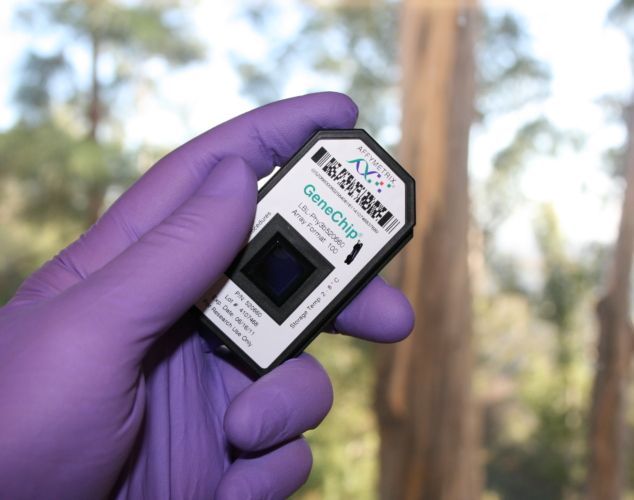New Technology Helps Pinpoint Sources of Water Contamination
Published on by Water Network Research, Official research team of The Water Network
Scientists from Berkeley Lab have developed a highly accurate, DNA-based method to detect and distinguish sources of microbial contamination in water.
 Using the award-winning PhyloChip, a credit card-sized device that can detect the presence of more than 60,000 species of bacteria and archaea, the new method was found to be more sensitive than conventional methods at assessing health risks.
Using the award-winning PhyloChip, a credit card-sized device that can detect the presence of more than 60,000 species of bacteria and archaea, the new method was found to be more sensitive than conventional methods at assessing health risks.
In tests at the Russian River watershed in Northern California, the Berkeley Lab researchers found instances where their method identified potential human health risks that conventional fecal indicator tests had failed to detect.
Conversely, they also found instances where the conventional tests flagged bacteria that weren't likely risks to human health.
The research was led by Eric Dubinsky and Gary Andersen, microbial ecologists at Berkeley Lab, and was published recently in the journal Water Research in an article titled, "Microbial source tracking in impaired watersheds using PhyloChip and machine-learning classification." Steven Butkus of the North Coast Regional Water Quality Control Board, which supported part of the research, was also a co-author.
"With the PhyloChip, in an overnight test we can get a full picture of the microorganisms in any given sample," Dubinsky said. "Instead of targeting one organism, we're essentially getting a fingerprint of the microbial community of potential sources in that sample. So it gives us a more comprehensive picture of what's going on. It's a novel way of going about source tracking."
What local water agencies currently do is collect water samples, culture the bacteria overnight, and then check the growth level of two types of bacteria, E. coli and Enterococcus, which are presumed to be indicators of fecal contamination
Power of the PhyloChip
However, this method doesn't distinguish between sources¬. The bacteria could have come from humans, cows, ducks, sewage, or even decaying vegetation.
"These tests have been used for decades and are relatively primitive," Dubinsky said. "Back in the 1970s when the Clean Water Act was developed and we had sewage basically flowing into our waters, these tests worked really well. Epidemiological studies showed an association of these bacteria with levels of illness of people who used the water. These bacteria don't necessarily get you sick, but they're found in sewage and fecal matter. That's why they're measured."
As pollution from point sources—single identifiable sources such as sewage—has been cleaned up over time, the emerging concern has become what are known as nonpoint sources, or diffuse sources, throughout the watershed, such as agricultural lands.
"The picture is much more complicated now than it was back then, when the concern was really point sources," Dubinsky added.
The PhyloChip, which was developed by Andersen and several other Berkeley Lab scientists, has been used for a number of medical, agricultural, and environmental purposes, including understanding air pollution, the ecology of coral reefs, and environmental conditions of the Gulf of Mexico after the BP oil spill. With 1 million probes, it identifies microbes based on variations of a specific gene, with no culturing needed.
"About seven years ago we started doing water quality work, and we realized the PhyloChip could provide a fundamentally new and improved method for doing source tracking," Andersen said.
Read full article at: Phys.org
Media
Taxonomy
- Public Health
- Bacteria
- Treatment
- Decontamination
- Technology
- Pollution
- Contaminant Control
- Flip Chip